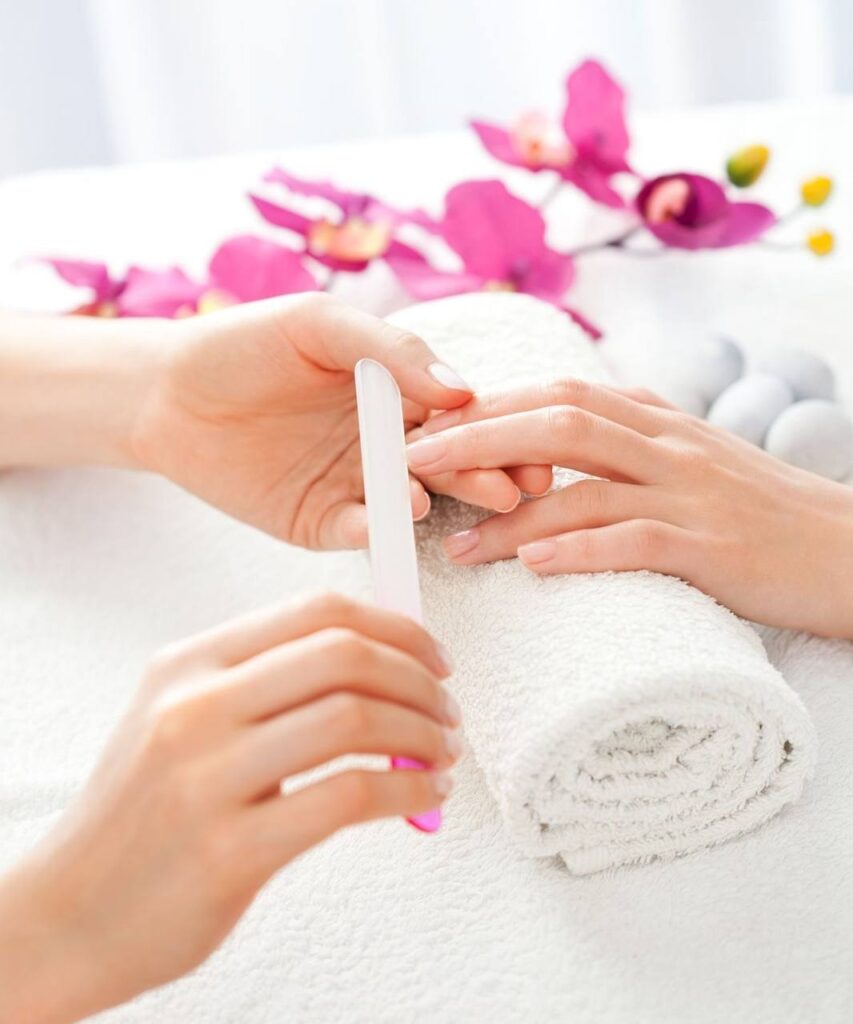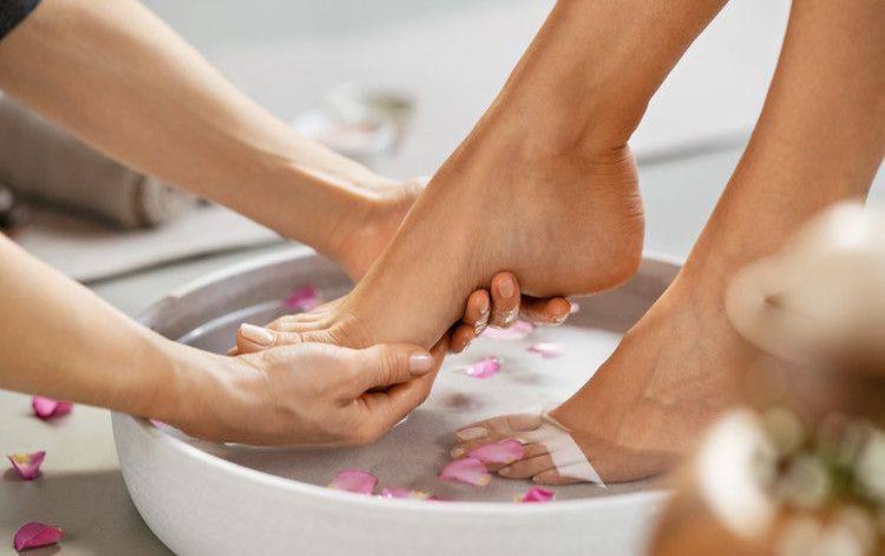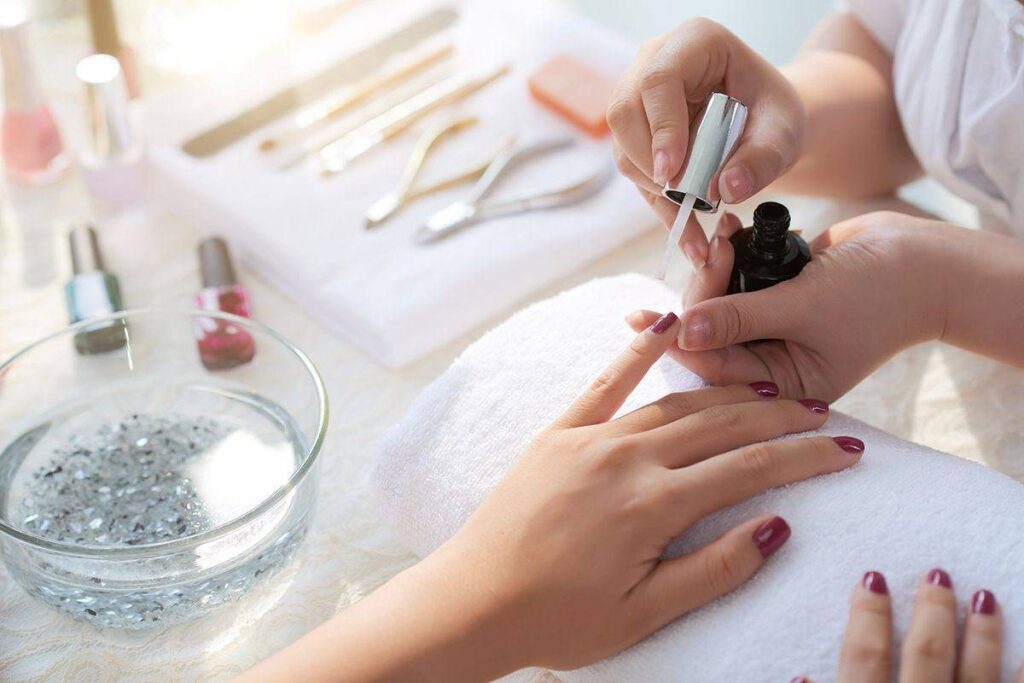Two experts, board-certified dermatologist and nail specialist Dr. Dana Stern and manicurist Gina Edwards provide a step-by-step analysis of what it takes to achieve a salon-quality manicure at home.

As long as you have the necessary supplies on hand and a little patience, it’s fairly straightforward and quick to implement. First things first, remove any polish. “If you have polish on, take off any leftover polish before getting your nails done,” advises Stern.
Observe your cuticles. To guarantee that your nails appear neat and polished, it’s critical to take good care of your cuticles. To prepare for an at-home manicure, Stern advises gently pushing back the cuticle after a shower. “After taking a bath or shower, use a washcloth to do this,” Stern noted.
The next step is to file your nails, put lotion on your hands, and then apply a base coat. Next, paint your nails, add nail art if desired, and lastly, apply a top coat. Applying a top coat once the color polish has completely dried is essential to completing a manicure, as it seals the design and helps against chipping and peeling.
What Is the Difference Between Pedicure and Manicure?
It can all get a little complex when it comes to nail art. Pedicures concentrate more broadly on your hands and feet, while manicures concentrate especially on your fingernails. Your manicures and pedis will be taken care of in one sitting with a nail spa session. During a manicure, your fingernails are the main focus.
ALSO READ: 10 Short White Nail Looks to Rock All Summer
In other words, you’ll need a pedicure if you want to get your toes done or have that annoying hangnail removed from your thumb. Regular manicures have several advantages beyond improving the appearance of your hands.
If you get regular manicures, your nails and cuticles can grow long and strong without breaking or splitting. They also help prevent cracking or wrinkling as quickly and maintain the soft, supple skin around your nails.

How Often Should I Get a Manicure?
Your lifestyle might have a big influence on how frequently you get manicures and pedicures. If your hands are subjected to more wear and tear from your everyday job or pastimes, your nails and feet will naturally require a little more care than those of someone who doesn’t perform a lot of physical labor.
POLL—Should the Government Increase Taxes on the Wealthy To Reduce Economic Inequality?
Professionals advise getting a manicure and pedicure every two to three weeks to keep your nails in the finest possible condition so that you can fully benefit from these procedures.
During this period, your cuticles and nails will start to dry out and become jagged, and most nail polishes and coatings will also start to chip. Thus, it is a perfect time for a refresher.
How Should You Maintain a Manicure?
Request a waterless manicure. During a nail service, getting your cuticles and nails wet may temporarily make you feel warm and fuzzy, but it also causes your nails to swell. Apply a fresh coat of topcoat every two days to your manicure.
An aged manicure is made to last longer by adding a thin coat of topcoat, which re-stabilizes the polish and brings back the sheen. When cleaning or doing dishwashing, put on gloves.
Using hot water and detergent together can be fatal for any manicure, so make sure you wear long rubber gloves to protect your nails. Apply cuticle oil! Using cuticle oil regularly strengthens nails, hydrates dry, cracked cuticles, and enhances the appearance of your hands.
Give several foods and spices a try on your nails. Certain foods and spices, like turmeric or beets, naturally stain everything they come in contact with, including your nails, as they have vivid colors.

How Many Types of Manicures Are There?
There are eight different types of manicures you can get at the nail salon. The classic manicure comes first. This is the original manicure, using the same products you can buy at a drugstore.
WATCH: DIY Cleaning Hacks to Try Today
Another kind of manicure is the French manicure, a timeless, sophisticated option known as French tips. Press-ons are fake nails that you attach to your natural nails using glue or adhesive to give the appearance of a well-done manicure.
This is pretty much the entire DIY manicure process. Gel manicures can last up to three times longer than conventional polish because they use UV light to cure and solidify a unique liquid varnish.
Think of this as an upgraded version of a basic manicure. We also have Plexi Gel manicures, Shellac manicures, Dip Powder manicures, and Acrylic manicures.
You Might Also Like:
Missouri Police Dog Dead Due to Extreme Heat After Being Left Unattended in a Patrol Car
Kamala Harris’ Husband, Douglas Emhoff, Opens Up About Having an Affair During His First Marriage
Berkshire Hathaway Apple Holdings Suffer 50% Cut
Serena Williams Blasts Paris Restaurant for Refusing Her a Table

